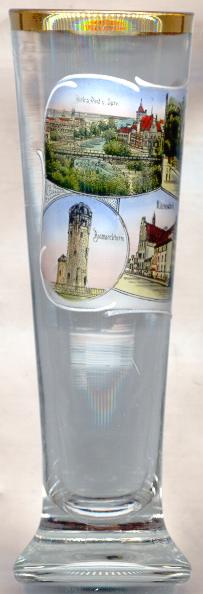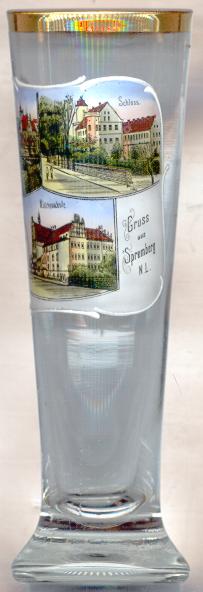

|
| DEUTSCHLAND | GERMANY |
| Bundesland: Brandenburg | |
| Landkreis: Spree-Neiße |

 Spremberg is situated on the river Spree in south east Brandenburg. Not much is known about the early history of Spremberg
as most documents of these times have been lost in the many large fires that have devastated the town. The oldest existing document
mentioning Spremberg dates from 1301. The status as a free town was obtained in 1397. The cloth-making industry became an important
factor for the oeconomic life of the time during the 19th century when the first cotton-mill using a steam engine was opened in 1856.
At the end of World War II 70% of the town were destroyed. In recent years the historic town centre has been renovated.
Spremberg is situated on the river Spree in south east Brandenburg. Not much is known about the early history of Spremberg
as most documents of these times have been lost in the many large fires that have devastated the town. The oldest existing document
mentioning Spremberg dates from 1301. The status as a free town was obtained in 1397. The cloth-making industry became an important
factor for the oeconomic life of the time during the 19th century when the first cotton-mill using a steam engine was opened in 1856.
At the end of World War II 70% of the town were destroyed. In recent years the historic town centre has been renovated.
The  castle [right, top] had come into possession og the Counts of Schwarzenburg-Wachsenburg in 1349.
In 1504, the castle's captain used it as a robber-baron's stronghold. From 1731 it was the residence of Duke Heinrich of Saxe-Merseburg who owned the castle from 1696 until 1738.
since 1999 houses the museum on the Sorbic people which for centuries have formed
the history of the Lausitz region. The Sorbic language, a slavonic language, is in danger of becoming extinct so that the museum
hopes to help in the preservation of the Sorbic culture.
castle [right, top] had come into possession og the Counts of Schwarzenburg-Wachsenburg in 1349.
In 1504, the castle's captain used it as a robber-baron's stronghold. From 1731 it was the residence of Duke Heinrich of Saxe-Merseburg who owned the castle from 1696 until 1738.
since 1999 houses the museum on the Sorbic people which for centuries have formed
the history of the Lausitz region. The Sorbic language, a slavonic language, is in danger of becoming extinct so that the museum
hopes to help in the preservation of the Sorbic culture.
The  post office [left, top] with a telegraph post was opened in 1862.
post office [left, top] with a telegraph post was opened in 1862.
The  Bismarckturm [left, bottom] (24 m high) on top of the hill Georgenberg was erected in 1902–1903.
It was named after Reichskanzler Otto von Bismarck (1815–1898), the founder of the German Empire 1870/71. After World War II, the tower
was named "Georgenbergturm", but received its original name again in 1991.
Bismarckturm [left, bottom] (24 m high) on top of the hill Georgenberg was erected in 1902–1903.
It was named after Reichskanzler Otto von Bismarck (1815–1898), the founder of the German Empire 1870/71. After World War II, the tower
was named "Georgenbergturm", but received its original name again in 1991.
Several glasses of this collection show other Bismarck monuments.
The  school for girls [right, bottom] was built in 1905.
school for girls [right, bottom] was built in 1905.
![[scale]](lineal.jpg)